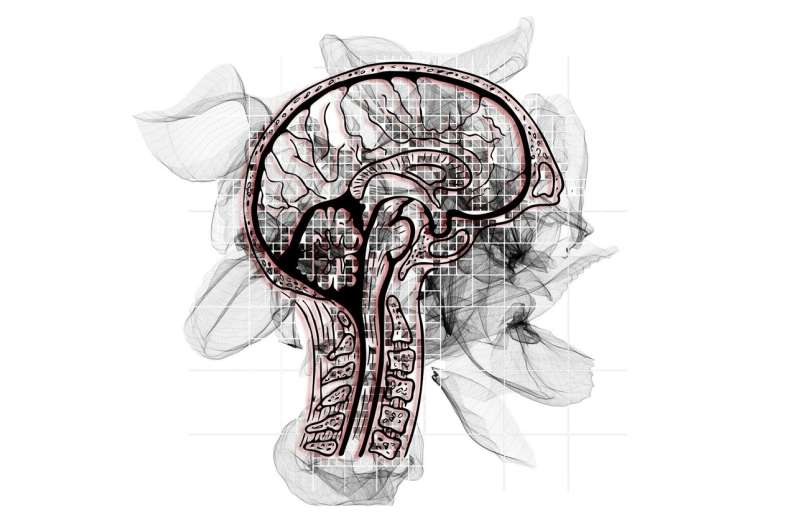This article has been reviewed according to Science X's editorial process and policies. Editors have highlighted the following attributes while ensuring the content's credibility:
fact-checked
peer-reviewed publication
trusted source
proofread
First-of-its-kind test can predict dementia up to nine years before diagnosis

Researchers at Queen Mary, University of London have developed a new method for predicting dementia with over 80% accuracy and up to nine years before a diagnosis. The new method provides a more accurate way to predict dementia than memory tests or measurements of brain shrinkage, two commonly used methods for diagnosing dementia.
The team, led by Professor Charles Marshall, developed the predictive test by analyzing functional MRI (fMRI) scans to detect changes in the brain's default mode network (DMN). The DMN connects regions of the brain to perform specific cognitive functions and is the first neural network to be affected by Alzheimer's disease.
The researchers used fMRI scans from over 1,100 volunteers from UK Biobank, a large-scale biomedical database and research resource containing genetic and health information from half a million UK participants, to estimate the effective connectivity between ten regions of the brain that constitute the default mode network.
The researchers assigned each patient with a probability of dementia value based on the extent to which their effective connectivity pattern conforms to a pattern that indicates dementia or a control-like pattern.
They compared these predictions to the medical data of each patient on record with the UK Biobank. The findings showed that the model had accurately predicted onset of dementia up to nine years before an official diagnosis was made, and with greater than 80% accuracy. In the cases where the volunteers had gone on to develop dementia, it was also found that the model could predict within a two-year margin of error exactly how long it would take that diagnosis to be made.
The researchers also examined whether changes to the DMN might be caused by known risk factors for dementia. Their analysis showed that genetic risk for Alzheimer's disease was strongly associated with connectivity changes in the DMN, supporting the idea that these changes are specific to Alzheimer's disease. They also found that social isolation was likely to increase the risk of dementia through its effect on connectivity in the DMN.
Charles Marshall, Professor and Honorary Consultant Neurologist, led the research team within the Centre for Preventive Neurology at Queen Mary's Wolfson Institute of Population Health. He said, "Predicting who is going to get dementia in the future will be vital for developing treatments that can prevent the irreversible loss of brain cells that causes the symptoms of dementia. Although we are getting better at detecting the proteins in the brain that can cause Alzheimer's disease, many people live for decades with these proteins in their brain without developing symptoms of dementia.
"We hope that the measure of brain function that we have developed will allow us to be much more precise about whether someone is actually going to develop dementia, and how soon, so that we can identify whether they might benefit from future treatments."
Samuel Ereira, lead author and Academic Foundation Programme Doctor at the Centre for Preventive Neurology, Wolfson Institute of Population Health, added, "Using these analysis techniques with large datasets, we can identify those at high dementia risk, and also learn which environmental risk factors pushed these people into a high-risk zone.
"Enormous potential exists to apply these methods to different brain networks and populations, to help us better understand the interplays between environment, neurobiology and illness, both in dementia and possibly other neurodegenerative diseases. fMRI is a non-invasive medical imaging tool, and it takes about six minutes to collect the necessary data on an MRI scanner, so it could be integrated into existing diagnostic pathways, particularly where MRI is already used."
Hojjat Azadbakht, CEO of AINOSTICS (an AI company collaborating with world-leading research teams to develop brain imaging approaches for the early diagnosis of neurological disorders) commented, "The approach developed has the potential to fill an enormous clinical gap by providing a non-invasive biomarker for dementia. In the study published by the team at QMUL, they were able to identify individuals who would later develop Alzheimer's disease up to nine years before they received a clinical diagnosis. It is during this pre-symptomatic stage that emerging disease-modifying treatments are likely to offer the most benefit for patients."
More information: Charles R. Marshall et al, Early detection of dementia with default-mode network effective connectivity, Nature Mental Health (2024). DOI: 10.1038/s44220-024-00259-5


















